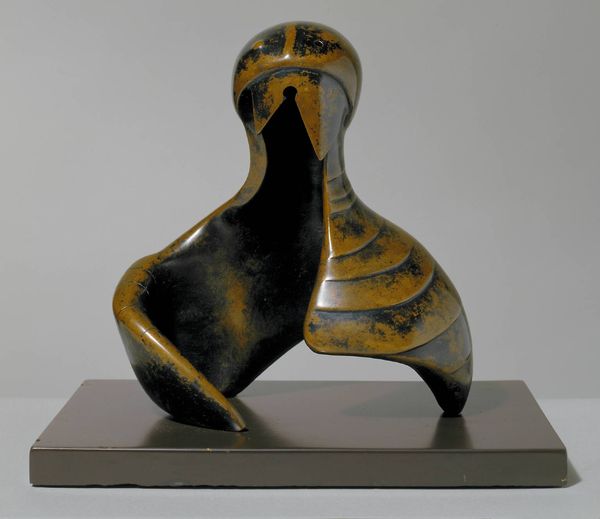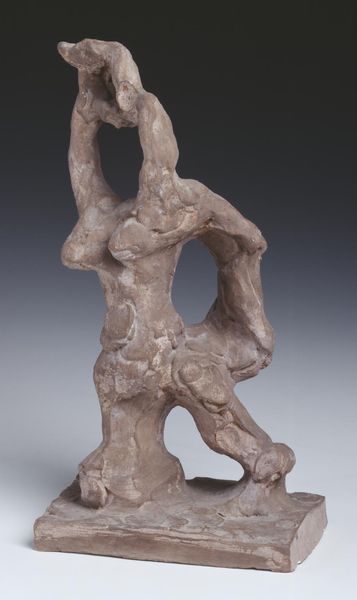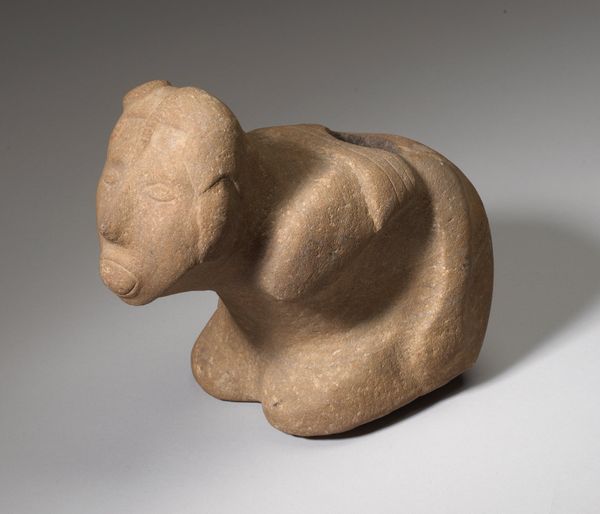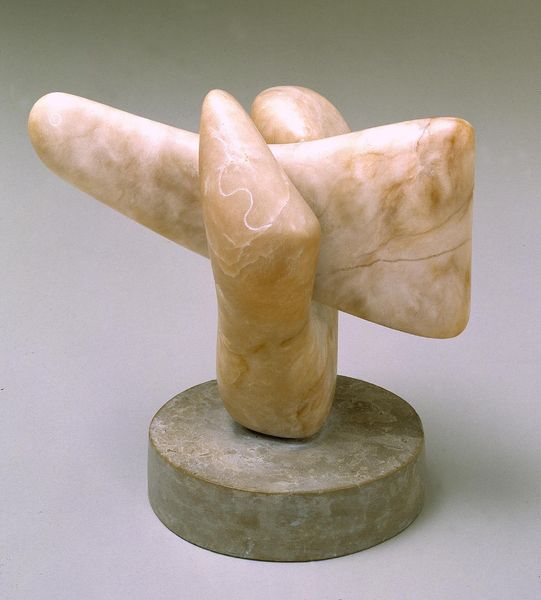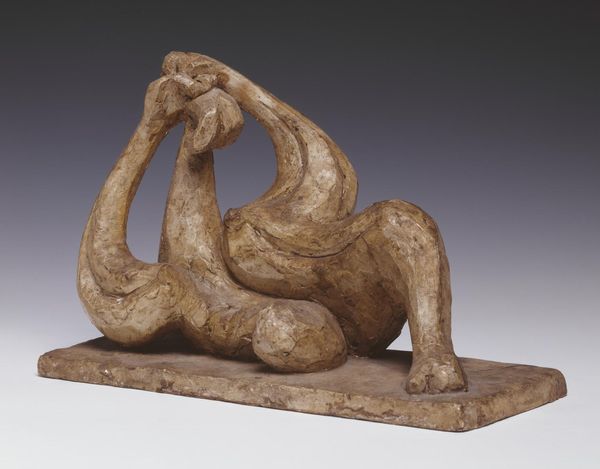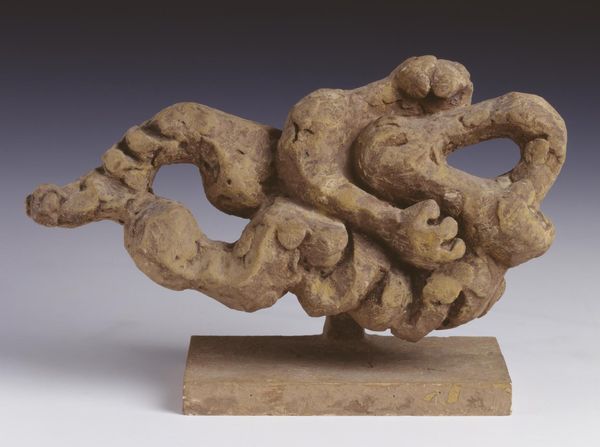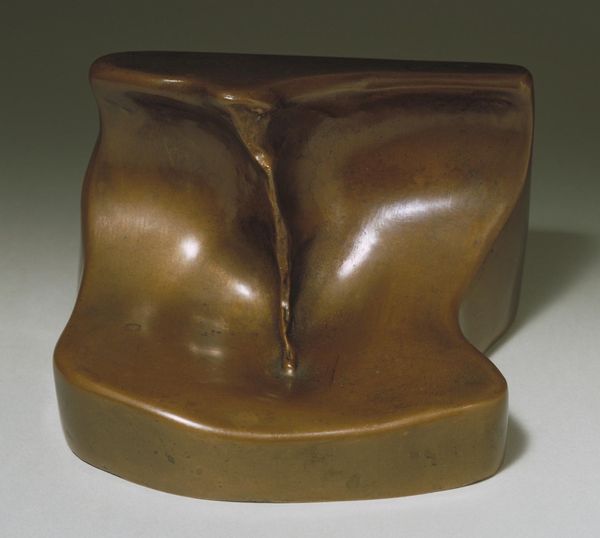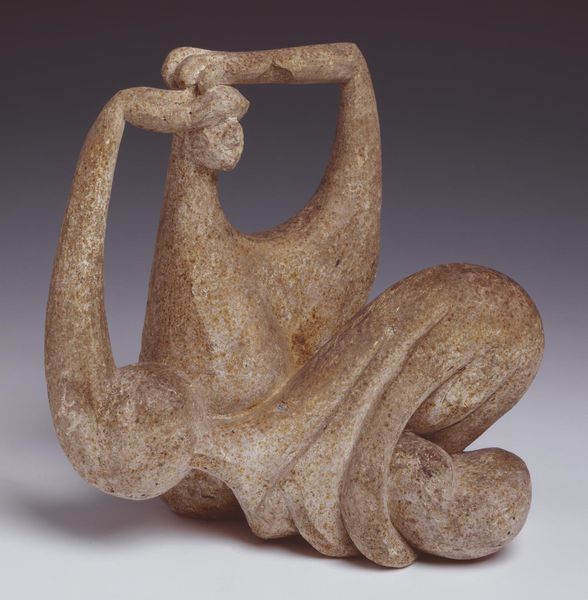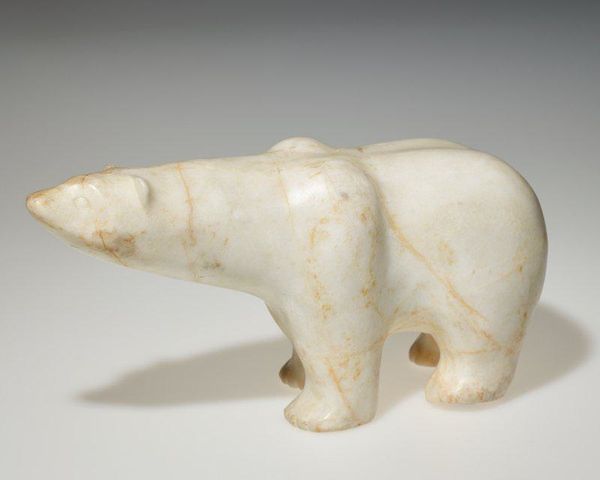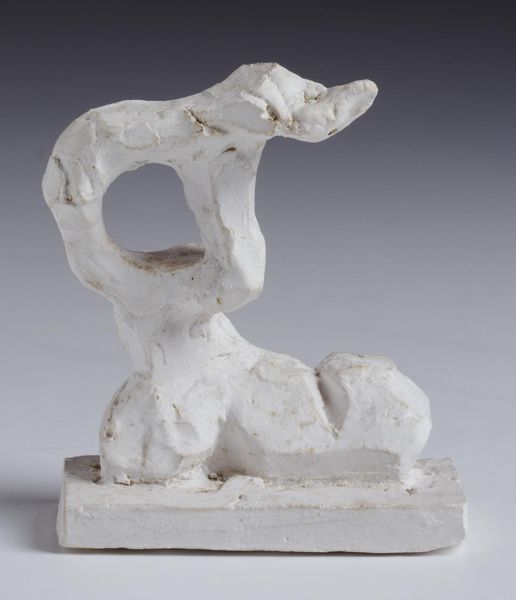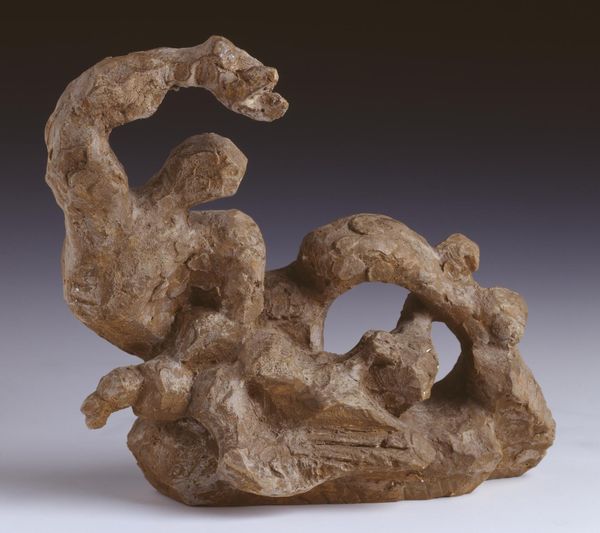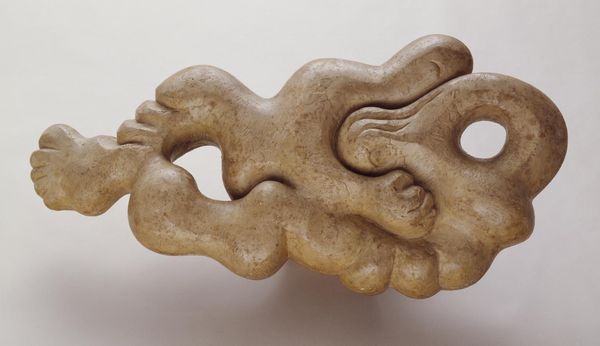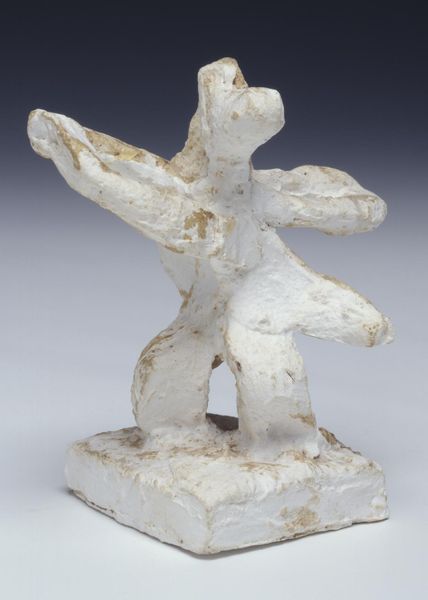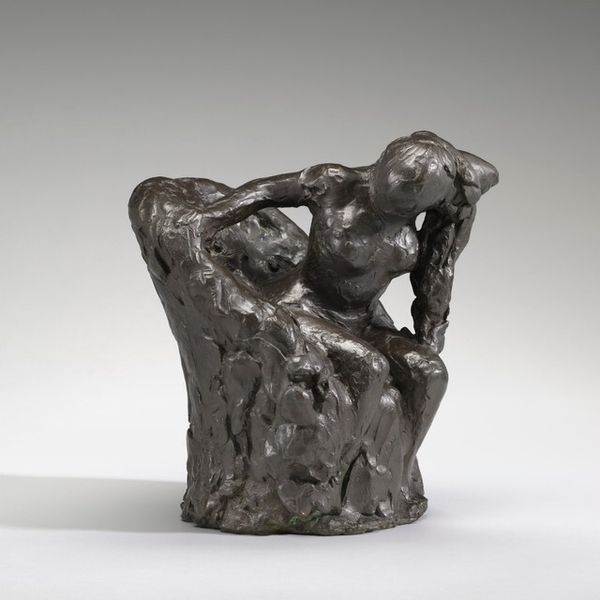
Dimensions: object: 387 x 622 x 349 mm
Copyright: © The estate of Maurice Lambert | CC-BY-NC-ND 4.0 DEED, Photo: Tate
Curator: Here we have Maurice Lambert's "Swan," held at the Tate. The sculpture is constructed from alabaster. Editor: It's fascinating how Lambert distills the swan to these sleek, interlocking forms. A sense of latent power emanates from the object. Curator: Swans, in mythology, are often linked with grace and transformation, consider Leda and the Swan. The alabaster enhances this with its translucent, ethereal quality. Editor: Certainly, but it's the reductive approach to form that captures my attention. Note how Lambert eschews detail to foreground the interplay of mass and void. Curator: The cultural symbolism enriches the visual experience, for me, adding layers of narrative depth beyond pure form. Editor: Perhaps, but I am most interested in the elegant tension he creates. Curator: Ultimately, the work creates a discussion of perception. Editor: Yes, each sees something different in the sculpture.
Comments
Join the conversation
Join millions of artists and users on Artera today and experience the ultimate creative platform.
tate 6 months ago
⋮
Like Epstein's Jacob and the Angel and the sculptures opposite these works are carved from alabaster which probably originated in Derbyshire, England. One of the characteristics of alabaster is its translucency. The passage of light through the wing adds an appropriate lightness to Lambert's Swan, while Skeaping's Gazelle seems almost to glow. The softness of the stone facilitated the carving of the details of the gazelle and its accompanying palm tree. Gallery label, August 2004
